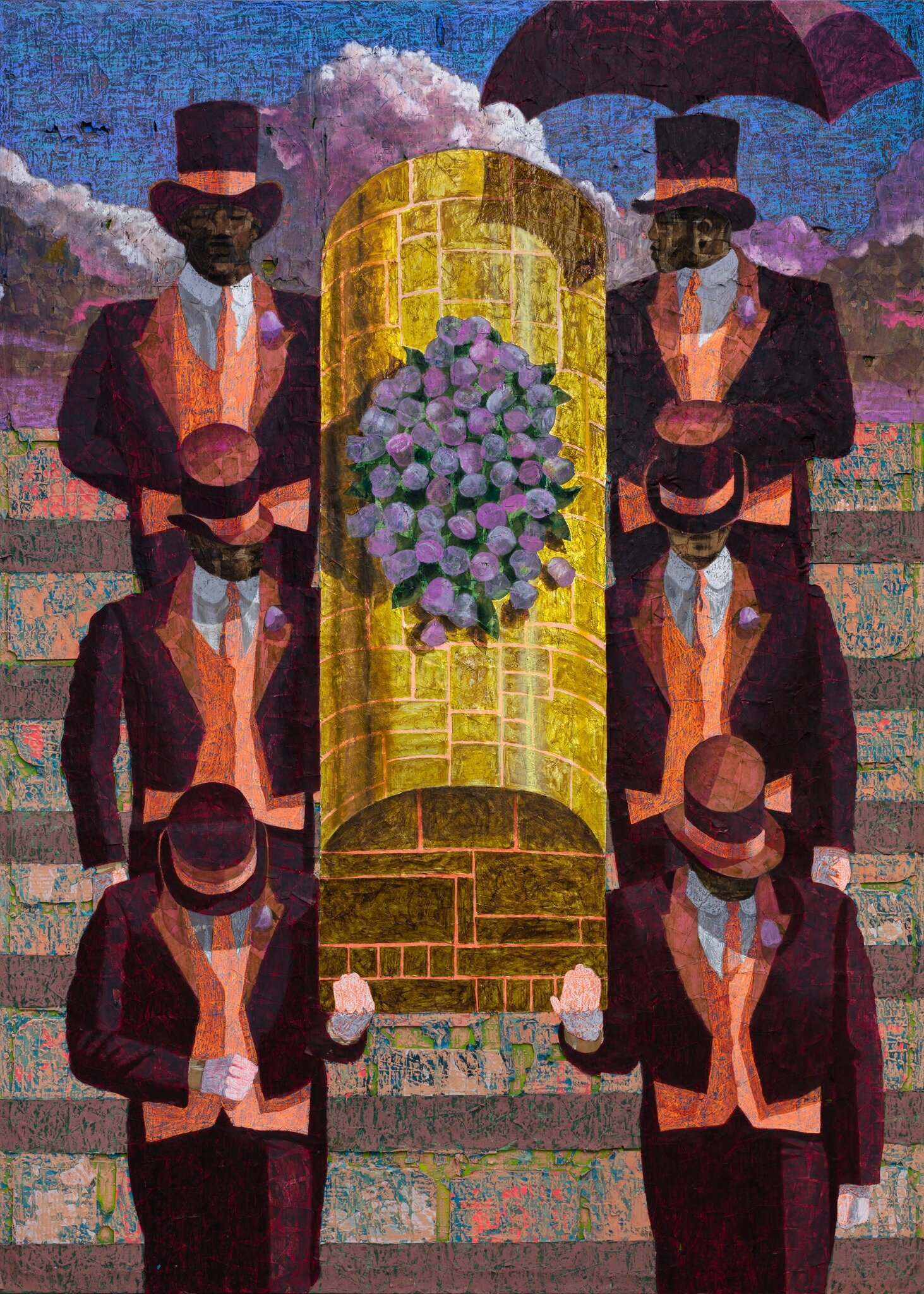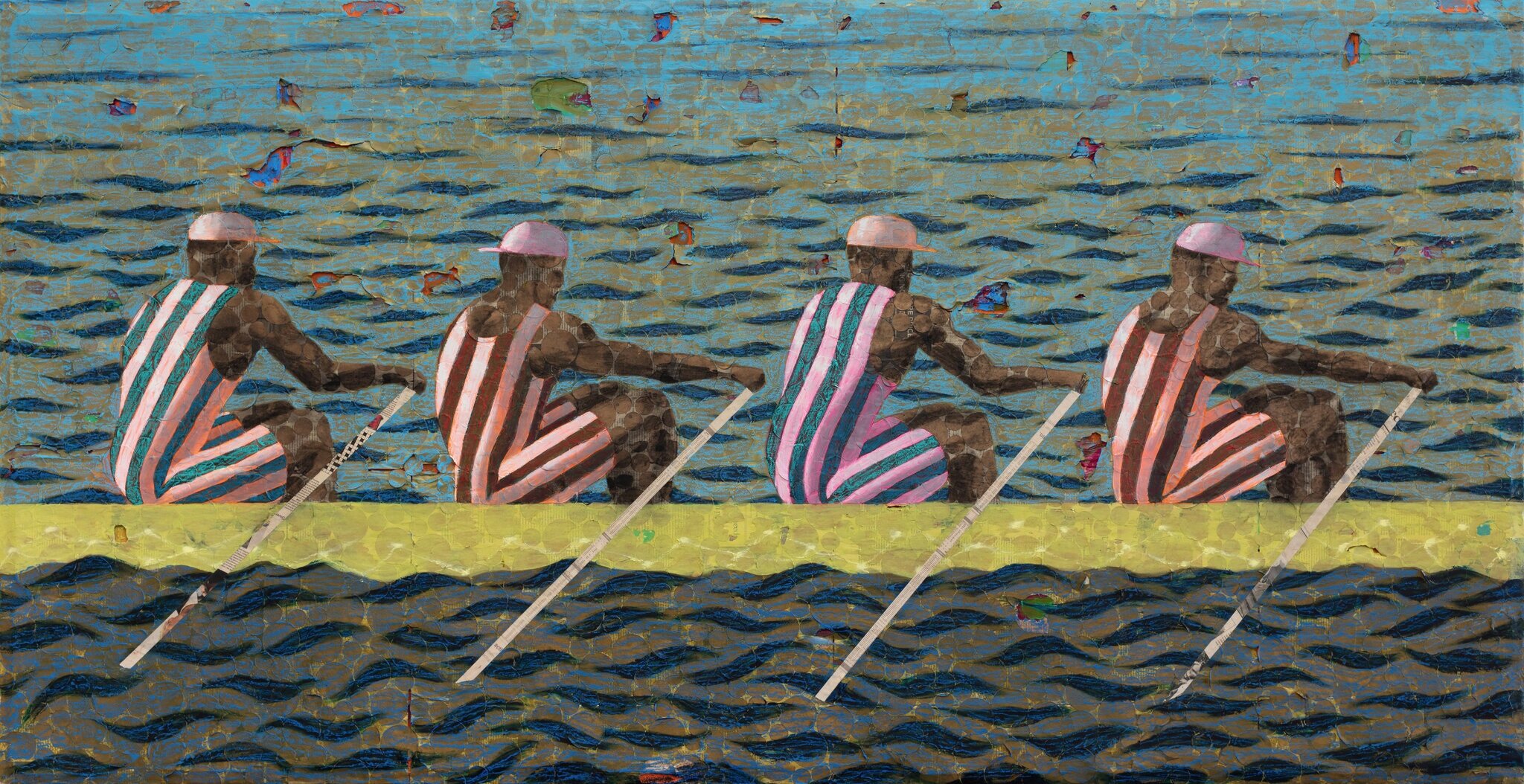Meet Derek Fordjour
In a bare room upstairs from his art studio inside an industrial building in the South Bronx, Derek Fordjour watched as three puppeteers brought a character drawn right out of his paintings to three-dimensional life. The artist was forging yet another branch of his multiform practice: a live show, inspired by Japanese puppet theater, to complement work in his upcoming gallery exhibition.
Mr. Fordjour often depicts Black athletes and performers — dancers, riders, rowers, drum-majors — as strivers who navigate the ambiguities that come with their achievement, and the racial scrutiny that accompanies visibility in the mainstream culture.
The wood puppet was a vessel for these concerns. He had an athletic look, in breeches and a tunic. The top was a striped number in pink, blue, and brown, typical of the busy colors and patterns that energize Mr. Fordjour’s paintings. The character careened between triumph and slapstick abjection as the puppeteers moved him across a long table with artificial turf.
The puppet bent to pick up a ball; it stuck to his hand. As he tried to shake it off, a laugh track played — a crowd guffawing at his distress. Later he soared for a dunk, Jordan-style. He was mocked and applauded — the story suggested that what elevates Black achievers in our society can also erode their psyches.
“I love learning other ways to have a conversation,” Mr. Fordjour said after the rehearsal, a collaboration with the puppet artist Nick Lehane. “Painting has its utility, but performance is another register.”
At 46, by art-world metrics, Mr. Fordjour is already registering. He was a market sensation in 2019 with a noteworthy sale at Phillips, where “Agency and Regulation (study)” went for $137,500, double its estimate. At the Frieze art fair he sold a suite of 10 paintings to Jay-Z and Beyoncé.
This year brought his first full-fledged museum show, at the Contemporary Art Museum St. Louis, where paintings hung in a tropical environment that included corrugated metal walls and an ingenious method to replicate the sound of rain. “The idea was about creating a multisensory experience,” Wassan al-Khudhairi, the show’s curator, said of the immersive staging. She added, “He’s an extremely ambitious person; risk-taking is part of the journey.”






